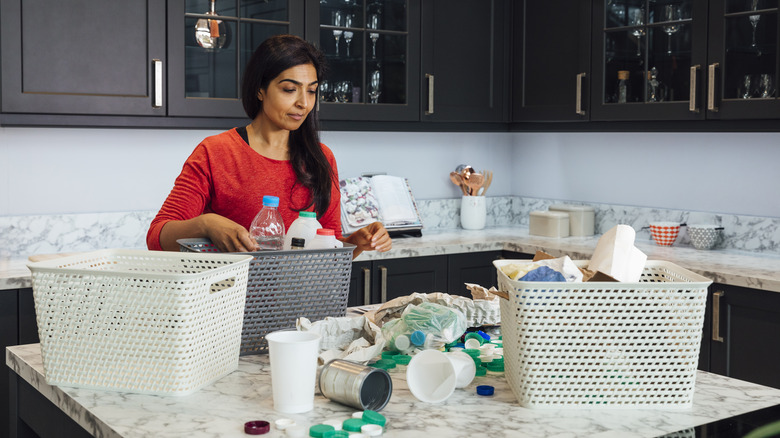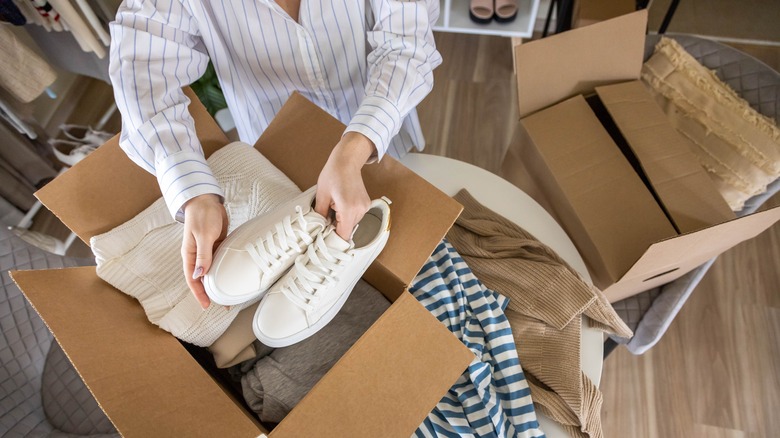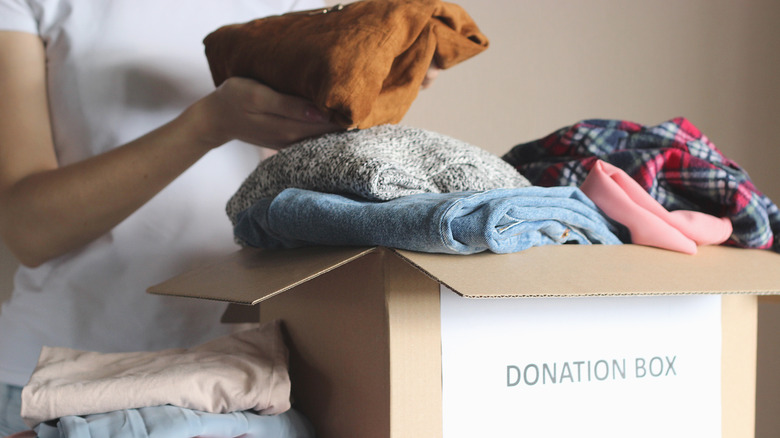Why You Should Ditch The Keep Box While Decluttering Your Home
It's rare that someone presents an idea that is so mind-blowing that it feels like a completely new concept. In the area of organizing and cleaning, the same trends and tips have been passed around so many times that it might come as a surprise that there could be something you haven't considered. While there are plenty of ways to revolutionize the way you declutter and tricks like 30-day minimalism or the 90/90 rule are great for people who need guidance, one trick might leave them all behind. If you've tried this way of tidying, you can likely attest to have efficient it is, but if you haven't, ditching your "keep" box when organizing your house could be the game-changing addition that leaves your home clutter-free. This method will stop you from holding onto items that don't have a home, freeing up space and removing pieces you might just be holding onto for no reason.
When it comes to cleaning and organizing, many people use boxes with categories written on them to separate belongings and make it easier to dispose of, donate, or rehome items. Rather than utilizing the keep box, YouTuber Dana K White recommends getting rid of it completely, and for good reason. The keep box can become a black hole of sentimentality or attachment to pieces that never get put away and take up space.
Ditch the keep box to avoid more clutter
Dana K. White shares in her video that all you really need is a throwaway and giveaway/donation box (so two boxes total). These will hold the items you know you're ready to part with, and hopefully, these will be full by the time you finish. Clothes in good condition, appliances, electronics, and dishware can all be donated to local charities, while broken or damaged pieces should be tossed. Another organization tactic, which recommends that for every item in, one must go out, is a great way to stay on top of tidiness, but avoiding a keep box, in general, will definitely kick off your deep clean and leave you with more room for non-negotiable items.
Without a keep box, you can't store items in hopes they eventually find a home. Instead of placing things you want to hold onto in a temporary vessel, they should be re-homed or placed immediately to determine if you have room for them. This approach not only forces you to pay attention to the pieces you are keeping but ensures clutter can't build up after you've already sorted everything.
Ask yourself these questions when decluttering
To help even more with this approach to decluttering, there are questions you can ask yourself to determine if an item is worth keeping. Always ask yourself: "Where should/can this go?" "Can it fit in a cupboard or closet?" "Is it display-worthy?" Consider if you use it enough that it can belong somewhere handy as opposed to languishing somewhere collecting dust. These all fall under the where-does-this-belong? category, so take time with each piece to ponder with intention. This question and the sub-questions will give you insight into what role the item plays in your home and life.
The second question that plays into this is, "Do you need it?" "Is it useful?" "Does it contribute?" While these questions overlap, they are helpful in narrowing down keep items. Two reasons for ditching a box for pieces you choose to hold on to are that you don't need a vessel to hold things to be addressed later. By immediately storing them, you're solving a future problem or task. White also notes that forced decisions that occur in the moment make it easier to make a choice because you're not pondering or overthinking. If it doesn't have a home, you likely don't need it. If you don't use it a lot, it can probably go. If it's a necessity, you can find a spot for it by using this method in other areas that will free up space for keep items.


